Metal AM in hydraulics: Aidro’s Valeria Tirelli on opportunities, applications, and joining Desktop Metal
A technology such as Additive Manufacturing relies heavily on industry champions to drive awareness, promoting the capabilities and potential of the process within their circle of influence. In the hydraulics industry, AM has no greater champion than Aidro srl's Valeria Tirelli, whose wide-reaching advocacy belies the company's modest size. Luca van der Heide interviewed Tirelli for Metal AM magazine and discussed the company's story, why the hydraulics sector is so well suited to AM, and, of course, the recent acquisition of Aidro by Desktop Metal. [First published in Metal AM Vol. 6 No. 3, Autumn 2021 | 25 minute read | View on Issuu | Download PDF]

Hydraulics, a long established sector within mechanical engineering and crucial to a huge range of industrial applications, has been largely unchanged in its practices and processes, which appear to have evolved little over the past decades. Valeria Tirelli, CEO of Aidro srl, fondly remembers how, in 2018, one of the sector’s leading magazines, Hydraulics and Pneumatics, when celebrating its 70th anniversary, presented a seventy-year-old advertisement for hydraulics components on one page, and a present-day advertisement on the next. “After seventy years, all components have more or less the same shape,” she said. “Although they have undergone changes in sophistication, the products are essentially the same.”
This seems to suggest that hydraulics would be, perhaps, immune to innovation, especially innovations pertaining to the manufacturing process itself – and it is certainly true that there is, even to this day, a great deal of resistance towards a transition away from legacy processes. However, the last few years have shown that new, increasingly popular technologies such as Additive Manufacturing can, by fulfilling specific needs in a wide range of applications, solve long-recognised problems while empowering the hydraulics sector to adapt to the needs of an ever-evolving, ever-demanding global market.
In this article, we explore the benefits of AM in hydraulic systems, presenting applications, and addressing, based on Aidro’s experience, the biggest concerns regarding the use of AM in the hydraulics sector.
Why introduce AM to the hydraulics sector?
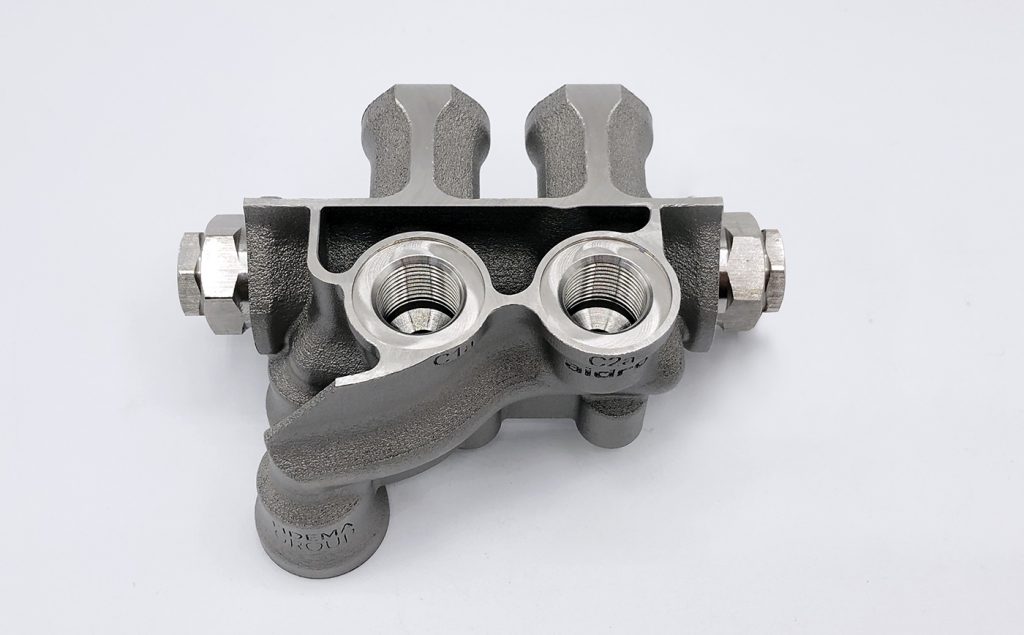
Aidro introduced its very first Fused Deposition Modelling (FDM) Additive Manufacturing machine in 2015, and used this technology – a filament-based Material Extrusion (MEX) process – to produce fixtures, fittings and prototypes from polymers. This proved a more cost- and time-efficient alternative to using external manufacturers. “This was our priority, and the most attractive feature of 3D printing at the time,” says Tirelli, “because it allowed us to cut costs and long waiting times, and, especially, to customise tools each time, depending on our particular needs.”
However, as Aidro progressively discovered the benefits of the technology, the company began to consider expanding the use of AM from manufacturing in-house equipment to manufacturing finished products. Five years ago, after having initially experimented with polymeric prototypes, the firm decided to purchase its first Laser Beam Powder Bed Fusion (PBF-LB) machine for metal AM.
“At the time, the big players in hydraulics did not seem to have any additively manufactured components on the market,” said Tirelli. “Apart from a few case studies from a handful of universities, there were no examples to measure ourselves against. Naturally, our biggest concerns were with the mechanical qualities of the technology. Sure, AM promised the freedom to design more optimised components. But were the components going to cope with such a demanding application?”
After a long trial period, during which Aidro worked alongside the Politecnico Milano to test and research the technology, the company decided there was enough evidence to support the technology as a reliable production method for fluid power components. From an initial phase of prototyping, the company went on to produce its own valves using metal AM, some of which have now become fully validated and are in series production. “This gave us the go-ahead to start thinking out of the box,” Tirelli explained, “and really push beyond the boundaries of traditional mechanical operations.”
Despite the company’s relatively small size, Aidro’s innovative designs did not go unnoticed, quickly attracting the attention of some of the major players in the industry. These, according to Tirelli, were usually very large companies with very specific needs that had not, thus far, been satisfactorily met by conventional production methods. “Companies that had been struggling with a certain design and had already been on the lookout for new solutions were naturally intrigued by the possibility of redesigning an application in an entirely customisable way, according to their exact specifications,” she stated. “This, we realised, was the greatest appeal of the technology: the possibility to completely redesign objects in view of special applications, and, in particular, to create objects of a high complexity and that could fulfil precise requirements of shape, material, weight, compactness, and performance.”
Today, as a consequence of the demands of large corporations and new application areas, Aidro has undergone an out-and-out process of transformation, both of internal production processes and of its quality assurance systems. Tirelli expanded, “Having to deal with sectors with very high quality standards, such as the aeronautical and oil & gas sectors, we had to improve our entire quality management system to EN/AS 9100. At the same time, the fact that our expertise was being acknowledged by other sectors sparked our enthusiasm to become promoters of Additive Manufacturing – not only by talking about it, but by showing physical objects and their real applications.”
Applications in the hydraulics industry: What can AM achieve?
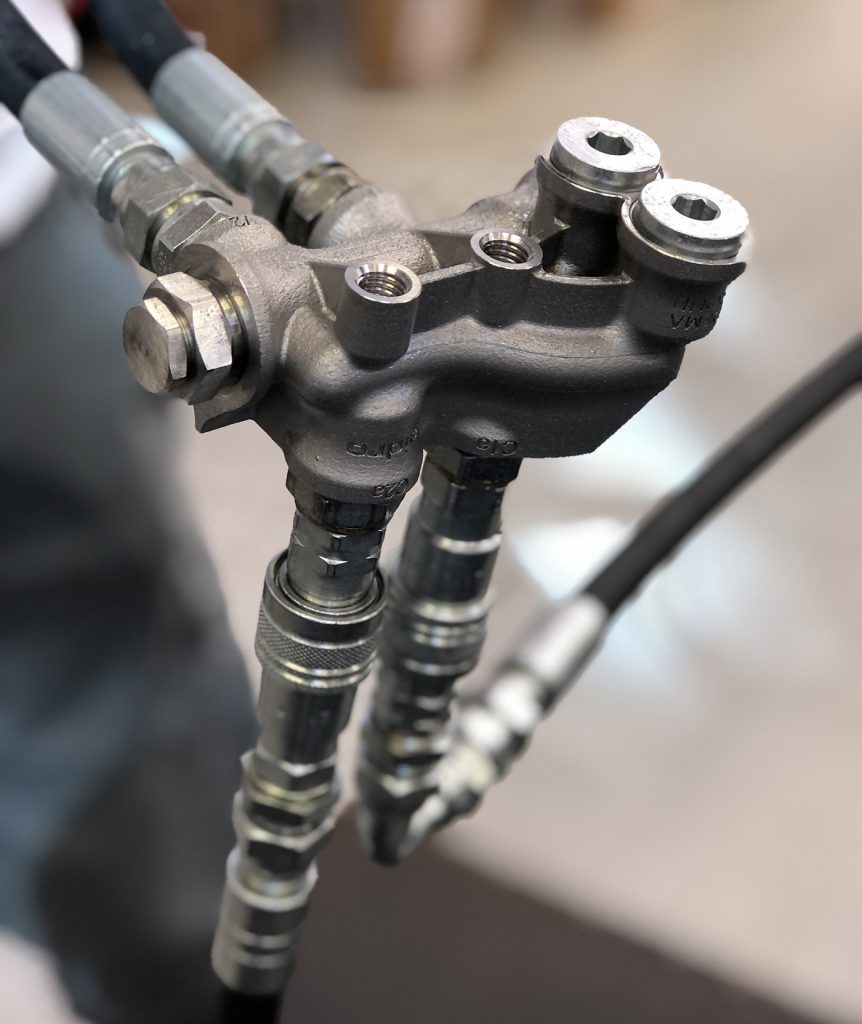
Hydraulic components are found in all machines that make use of fluid power, either to move or to perform specific functions. For this reason, the range of applications is extremely wide, from agricultural and construction machines, aircraft, ships and any other large mobile machinery, to industrial machines such as those for injection moulding, machining and so on. Each application area has specific demands and, thus, approaches AM technologies for specific purposes, depending on which advantages of the technology best suit the sector and its relative applications. Additive Manufacturing, in addition to offering the freedom to design and customise components, introduces a wide array of improved features that are bound to resonate to different extents with different sectors.
The main benefits of additively manufactured hydraulic components in the context of their most common applications are as follows:
Curved channels and reducing the number of components
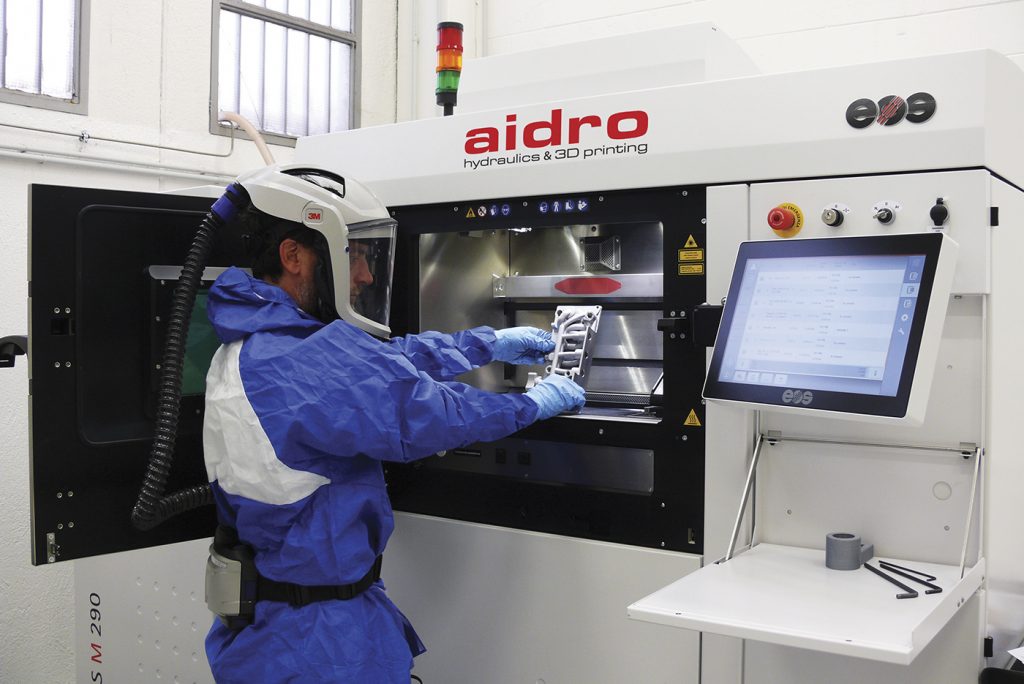
By adding metal layer-by-layer rather than machining it from a block, AM makes it possible to optimise internal channel design, replacing 90° intersections with optimised bends. In traditional hydraulics, valve intersections are created by drilling a hole on one side and another on the other side of the block. But, thanks to the use of specialised AM software and simulations of fluid dynamics, AM machines are able to produce curved channels, facilitating the flow and completely eliminating pressure drops. At the same time, this eliminates the need for auxiliary caps and plugs in the manufacturing process, removing the risk of leakage and presenting the two-fold advantage of optimising performance while preventing any potential damage to the environment.
“Curved channels improve the flow of the whole system,” stated Tirelli, “eliminating points of deceleration – what we call pressure drops. This is because with AM, I can design in parallel with fluid dynamics. We have software that runs simulations in real time. We can, for example, design a channel in which liquid will flow, run our FEA [Finite Element Analysis] and, if I have areas of slowdown, or any other undesired result, we simply go back to modify the design and run the simulation again. When we’re dealing with components containing fluids, the interrelation between simulation software and studies of fluid dynamics is essential.”
Another important benefit for design is the possibility to combine multiple components into one. This means not only integrating two functions – such as a manifold and a heat exchanger – but also physically combining the parts, resulting in a single, highly optimised component. Apart from the obvious advantage of not having to resort to two different suppliers, this also eliminates the need to assemble the parts, further reducing the chance of fluid leakage and allowing customers to save on assembling times and costs.
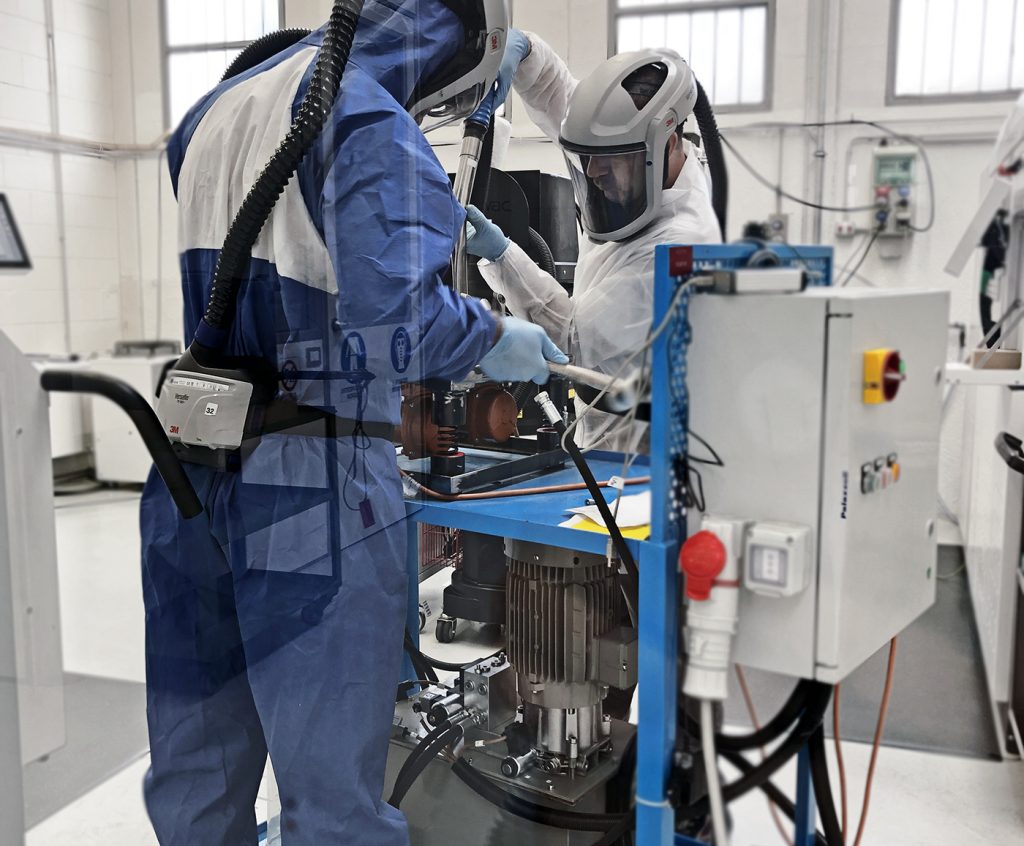
Strength and corrosion resistance: Materials and cooling channels
The PBF-LB machines operated by Aidro are able to create components from highly corrosion-resistant materials, including stainless steel, Inconel, aluminium and titanium. The choice of materials is extremely important, as every hydraulics system is vulnerable to both corrosive liquids as well as high pressures. For this reason, materials need to meet certain standards of strength, durability, and corrosion resistance. This is especially important for applications that are either subjected to exceptional strain, for example tractors and other agricultural machinery that have to bear the continuous stress of uneven ground, bumps and holes, or applications that are in contact with a marine – and, therefore, highly corrosive – environment.
As components must to be strong enough to tolerate the heat of the engines as well as the salinity of the sea, the marine sector requires hydraulic components that are both as light as possible and that can guarantee durability and corrosion resistance. One particularly striking example is that of high-performance competition jet skis. In this case, there was a need for high heat and corrosion resistance for exhaust manifolds that, being designed for racing, are subject to intense heat, but are also in contact with seawater at all times. “Thanks to the design and integration of cooling channels exactly where they were needed,” Tirelli explains, “we were able to create an exhaust manifold able to resist these challenges. The cooling channels, combined as they are with the manifold, would simply be impossible to achieve with conventional manufacturing methods.”
Lightness and compactness

A major benefit of AM for many sectors is the possibility to produce objects with a reduced weight and size. Tirelli explained, “A conventional manifold redesigned for AM can achieve a weight reduction of 30–40%, and in some cases this can extend to a very impressive 80–90%. The fact that components can be much lighter and more compact is very attractive for aeronautics and aerospace, sectors that are always in search of ways to reduce the size and weight of their components. Similarly, agricultural and other heavy machinery have to rise up to increasingly strict requirements of space, weight, and energy consumption.”
As demonstrated through numerous case studies, the compactness of additively manufactured components allows them to fit into smaller spaces and adapt to the hydraulics system where they are installed. A single AM component, while being smaller, can also improve the overall performance of the system thanks to its optimised design. This means that other components can also be smaller, and, therefore, consume less, without taking anything away from overall performance. On top of that, a lighter component means a lighter machine, therefore, less energy needed for movement. As Tirelli pointed out, in a sector where electrification is becoming the dominant trend, saving on energy is an ever more crucial and urgent concern.
Sustainability
Additive Manufacturing is more sustainable and less wasteful than conventional production processes. Firstly, it is more sustainable as a manufacturing process because it is based on the principle of using only as much material as is needed for the component, as opposed to subtractive technologies that start from a block of metal and proceed by removing all the excess material. Secondly, PBF-LB machines have 400-watt lasers – “basically, as much as my hairdryer!” Tirelli joked. Finally, the new designs made possible with AM, by optimising the function of the object, also introduce a series of more sustainable solutions, from the prevention of leakage to the reduction of energy wastage.
Nowadays, Tirelli explained, it is ever more important to adapt to a global market that is evolving in the direction of greener solutions. This is why technologies such as AM can only gain increasing interest and visibility, especially for those sectors that need to adopt more sustainable processes, such as energy/oil & gas. “It is important for every manufacturer, in every sector – and, in particular, for the sectors that produce a lot of CO2 – to pay attention to their carbon footprint,” said Tirelli. “Whereas we once focused on the CO2 emissions of power plants, today many customers are interested in the CO2 emitted to produce an object. In this context, Additive Manufacturing, being in itself a sustainable technology, has an advantage over traditional manufacturing processes. But, of course,” she clarified, “it is also up to the individual companies. We, as Aidro, realise the importance of reducing our carbon footprint, and keep taking steps in this direction.”
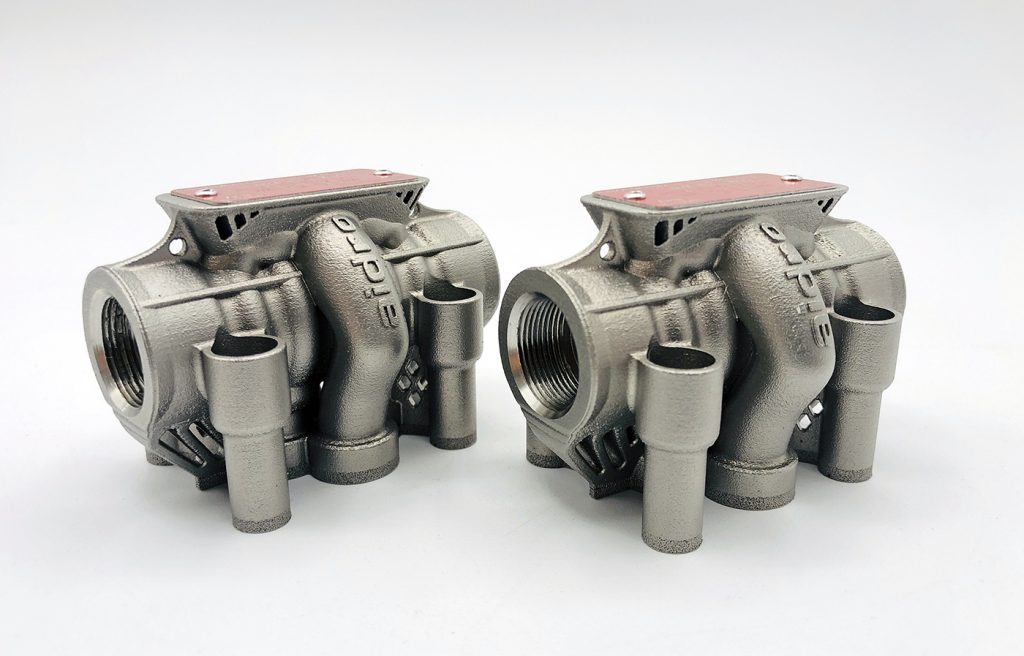
Among the initiatives taken to foster and enforce a greener manufacturing process, Tirelli mentions one of their most recent projects, presented at the international conference Off-Highway R-Evolution 2021 (see inset box). The project, developed in collaboration with CNH Industrial, involved applying Life Cycle Assessment (LCA) to compare the amount of CO2 emitted by traditional production with that emitted by additive techniques throughout every stage of the manufacturing process, ‘cradle to gate’: from raw materials (comparing the ingot with atomised metallic powder), to methods (comparing casting and AM) and post-processing. “The results, calculated in Global Warming Potential, were more than impressive,” Tirelli stated. “In comparison to casting, the workflow of an additively manufactured object amounted to a reduction of carbon emissions of over 60%.”
Spare parts and digital inventory
A related, much-discussed subject regarding AM and sustainability is the issue of spare parts. Possibly the main reason why a sector such as oil & gas approached the technology in the first place is the fact that AM processes are much quicker than conventional ones. Malfunctions that can cause a power plant to stop production are a big problem in this industry, as they may end up costing millions – but when it comes to replacing the defective part, AM has a very quick response time, and, of course, the sooner the part is replaced, the faster the plant can get back to producing power. As a result, the need to store ready-to-use spare parts in warehouses is greatly diminished.
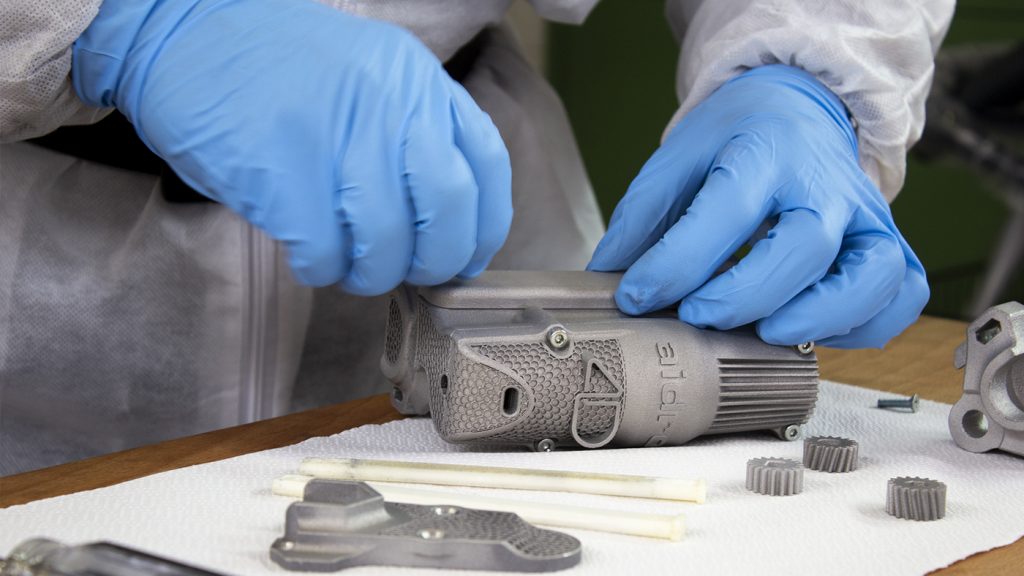
The accumulation of very large numbers of spare parts to be kept in stock, however, is still currently one of the major problems of the industry, due to the fact that most of these components are never used and end up becoming obsolete. One way to tackle this problem is by adopting a ‘digital inventory’, which refers to the digitalisation of design files for ready-to-use spare parts. “Many large corporations are putting into action long-term programmes of digitalisation, and we are cooperating with them to investigate which of their spare parts can effectively be digitalised,” stated Tirelli. “In fact, this is the biggest obstacle: the identification and selection of which spare parts can be produced by AM, and then the validation of those parts, especially if they are critical components, as parts that can legitimately replace the ones currently used.”
It is also worth mentioning a project in progress at Italian start-up f3nice srl, based in Milan, of which Aidro is a collaborator and supporter. If the digitisation of spare parts were to be normalised, the question remains: What to do with the millions of obsolete parts abandoned in warehouses? f3nice’s response is to recycle the old metal components, turning them back into stainless steel, aluminium and titanium powder by atomisation. The metal powder thus obtained is then reused to make new products. Tirelli explained: “We liked the idea from the beginning, and this is why, after the due tests and trials, we now offer, alongside the other materials, green recycled stainless steel. And the best thing is that customers seemed to immediately pick up on the idea and even consider it, most of the times, an added value.”
Overcoming fears, insecurities and scepticism
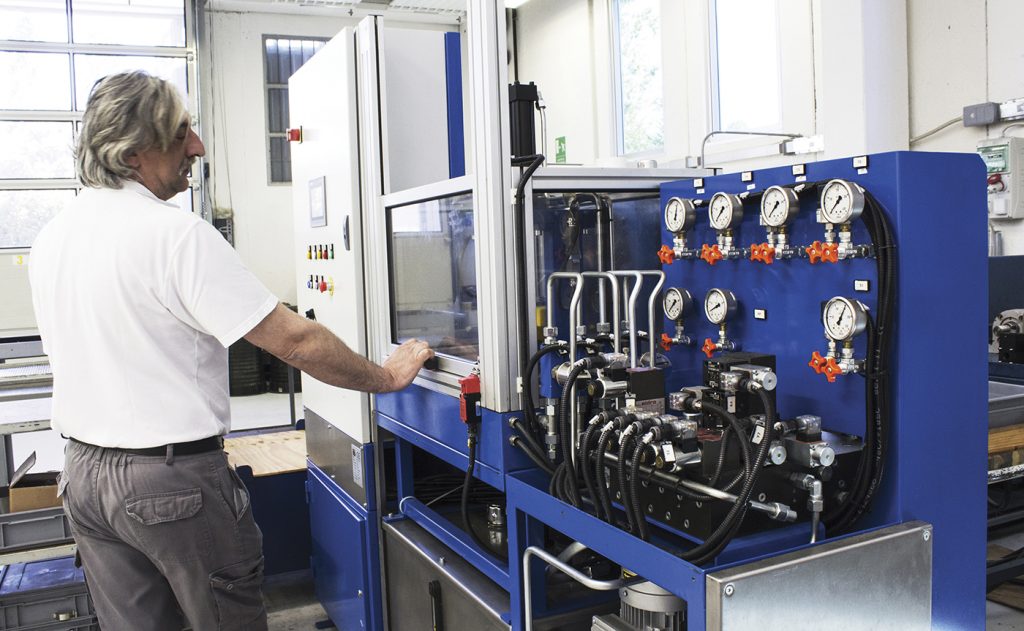
Tirelli explained that when first approaching Aidro, companies have, of course, already heard of Additive Manufacturing. They are curious, intrigued by the technology’s potential, but are naturally also hesitant about its reliability and applicability. For this reason, Aidro has developed an ‘introduction to AM course’, directed, for the most part, at designers and engineers, and aimed at answering every question on the technology.
This process of familiarisation includes an overview of the current status of AM, as well as technical data and test results. It is important to speak the same language, Tirelli emphasised: a technical language. “Still, telling the benefits of Additive Manufacturing is not enough. When someone, and specifically a technician, holds the AM part in their hand, that’s when they can really see, with their own eyes, what the technology is, how different the design is, and what are the actual potentialities.”
Aidro understands this scepticism all too well. “The usual fears and insecurities are the same we had at the beginning,” says Tirelli. “Does it resist? Will it break? We understand that for an engineer who has been used to designing components in the same way for a long time, the change of mentality can be really difficult. We have been there. This is why we are the right people to accompany them in this journey.”
After the first questions are answered, it is necessary to maintain ongoing communication throughout the Additive Manufacturing process chain, from designing to post-processing, in order to make sure that the part is manufactured according to the needs of the application. Companies that approach Aidro either need to redesign a part made with conventional processes that does not fulfil specific requirements, or they know which benefits of AM they want to take advantage of, but do not know how to achieve their goals.
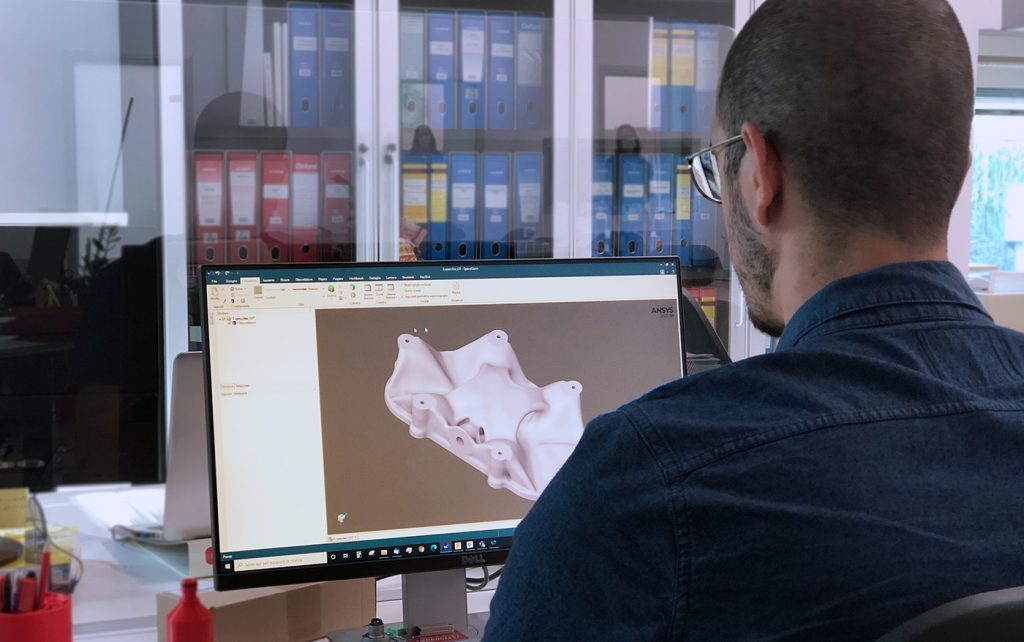
In the latter case, the object must be designed from scratch, using established practices of designing for AM, but keeping in mind the final application at all times. “It is all about understanding what the exact requirements of the application are, in order to identify the right design for each individual component,” explained Tirelli. “Keeping the dialogue open with the client, together with the possibility to run fluid dynamics simulations to continuously test the level of efficiency of the components, ensures a final design that is as optimised as possible for its specific function.”
To achieve this optimisation, taking full advantage of AM’s ‘freedom to design’, it is important to take the entire workflow into account. In post-processing in particular, conventional operations such as machining come into play to generate final surfaces, usually for those joints and extremities of the additively manufactured parts that have to connect to other components within the hydraulics system. “Additive Manufacturing has to be integrated with traditional methodologies,” Tirelli clarified, “which means that it is not supposed to replace established production processes, but to stand in beside them, and satisfy those requirements that otherwise could not be met.”
A catalyst for growth: the acquisition by Desktop Metal
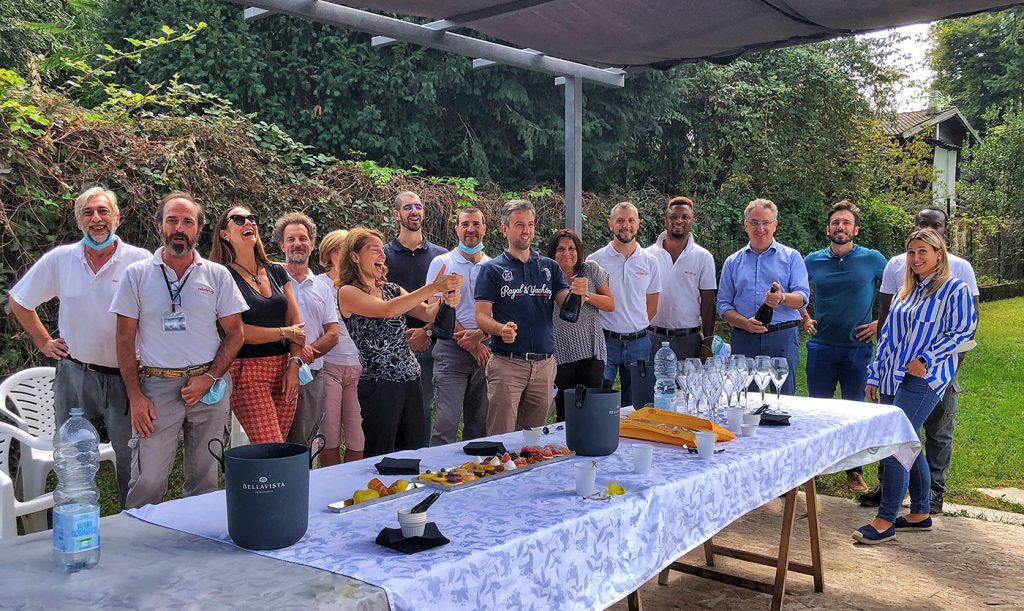
In early September 2021, Aidro was acquired by Desktop Metal, one of the most high-profile companies in AM and, amongst others, a provider of metal Binder Jetting technologies. The acquisition was announced with an air of huge excitement for both parties, motivated by the prospect of combining Aidro’s expertise of the AM production of hydraulics components with Desktop Metal’s technical resources and metal Binder Jetting solutions.
Although the acquisition appeared to happen rather suddenly, Tirelli remarked that growth has been on the cards for Aidro, and that the acquisition was not entirely unexpected. “We were not actively seeking to join with bigger groups”, Tirelli said, “but the substantial changes in quality management and technology development that we have undergone in the past few years has prepared us for such an opportunity and laid the foundation for growth. It is what we’ve been building up to.”
When Aidro started exploring metal AM technologies, PBF-LB was, among the AM processes available at the time, the most advanced and reliable, and, most importantly, the most suited for the needs of hydraulics. The technology was chosen for its mechanical properties and the many benefits it brought to a range of important hydraulic applications. Aidro has all intentions of continuing to utilise PBF-LB technology for those products that have the specific requirements that are best solved by this well-proven process. When it comes to the high-volume production of customised products, however, Tirelli believes that current medium-sized PBF-LB machines still have limitations. “This is why we always kept looking around. For the type and volume of products that we make, laser technology is perfect for special, niche applications. Binder Jetting will be the technology that allows us to achieve mass production of our innovative AM solutions.”
Tirelli states that Desktop Metal approached Aidro in part because of the increased visibility of the company as a promoter of AM, and that it is Aidro’s advocacy of the technology, as well as tangible examples of successful applications in industry, that Desktop Metal recognised as the greatest asset of this modest-sized Italian company. “What we bring to the table is a concrete, realistic image of what AM can do. From the conventional production of hydraulic components to introducing AM and now to a further expansion of AM processes, we can see that the technology will become more and more the core business of our company. This is why I believe that, despite our small size, we can become a point of reference for the hydraulics industry.”
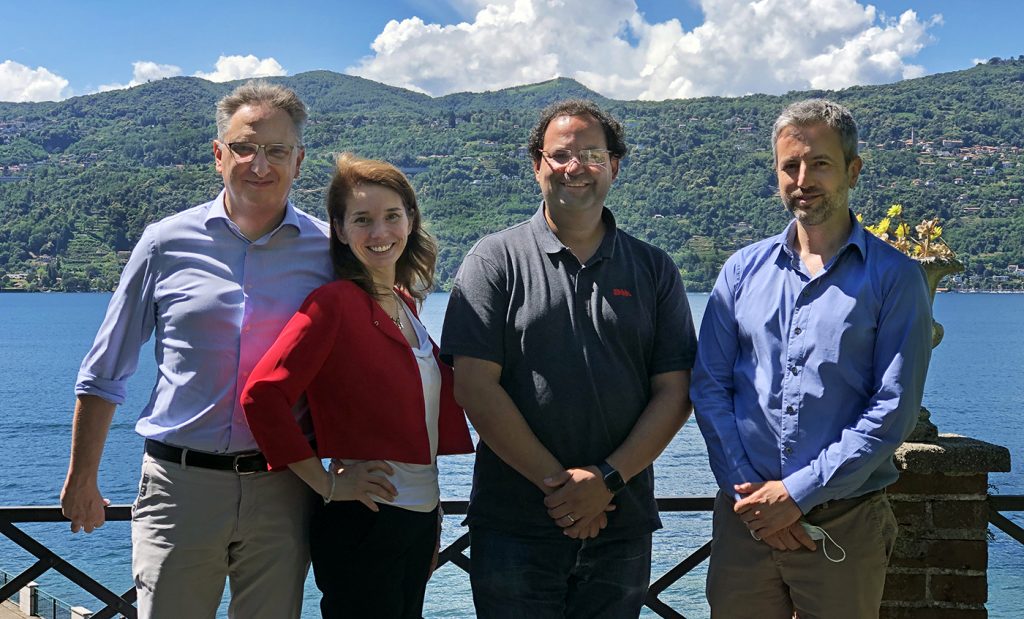
Aidro’s objective is now to start exploring the new technologies provided by Desktop Metal. “As we did with laser, we have to prove the effectiveness of the technology. Of course, we now come from a position of far stronger experience. Compared to five years ago, when we had to learn from scratch, today we have much more understanding with regards to design, tests to be run, post-processing etc. We are ready to take the machines home, start immediately to make products, and try to realise all the ideas that we have. We now have the chance to make these ideas a reality.”
Tirelli recognises that there is still a lot of work to do to get Binder Jetting ‘up to speed’. Compared to PBF-LB, Binder Jetting has a long way to go in terms of market penetration, the validation of the technology, and the many complexities surrounding standards and qualification. However, Binder Jetting has the potential to replace conventional manufacturing by enabling the high-volume production of customisable products in shorter time frames. Tirelli commented, “The importance of having an alternative technology to casting is especially evident in a post-pandemic world where foundries are experiencing difficulties in supplying raw materials and components, with a consequent dragging-out of delivery times. Thanks to Binder Jetting, we hope to overcome the drawbacks of long delivery times by producing in-house, without having to rely on external suppliers.”
The Aidro team is now waiting for the first Binder Jetting machines to arrive, and is eager to run the first tests and get down to business. “It will be necessary, at first, to establish a space for mutual learning”, said Tirelli. “The next step is to investigate the technology, and we intend to do so not only by taking full advantage of Desktop Metal’s resources, but also of our connections with the Politecnico Milano, other research centres, and, of course, other AM promoters in the Italy or the US. AM has from its inception always fostered a strong sense of community when it comes to advancing and validating the technology, and we know we will receive the support we need.”
Aidro’s experience with laser technology has taught it how crucial it is for the overall success of the new technology to be able to provide exact data. The process of acceptance, Tirelli remarked, will be the same. “Whether it is Binder Jetting or laser, the first thing our clients want to know are mechanical properties and test results.” They are therefore committed to walking the same steps that confirmed PBF-LB as a safe, repeatable manufacturing approach.
Tirelli stresses that she believes Desktop Metal highly values the team at Aidro, as well as its clients, and she is keen to ensure that there is uninterrupted continuity of customer relationships. “The acquisition will not in any way disrupt Aidro’s present activity, but rather open the doors to exceptional opportunities for cooperation. The idea is of a collaboration that allows us to bring together our strengths for mutual benefit. They provide technical support and equipment, while we contribute our knowledge of the hydraulics sector, which is considered a very important sector for its far-reaching applications, as well as our knowledge of design for additive. The next months will see a growth both on a technical level and of Aidro’s engineering team – because in the end, what really makes the difference is people.”
With this in mind, the company enters the vast, fast-growing family of Desktop Metal, in a spirit of reciprocal exchange and togetherness. “The feeling is to be in a family”, says Tirelli, “where people are recognised for their value. I can see the definite will to work together for a common good. Desktop Metal has been given a lot of trust from the market, and after due consideration, we decided it was worthy of our trust as well.”
Current and future challenges
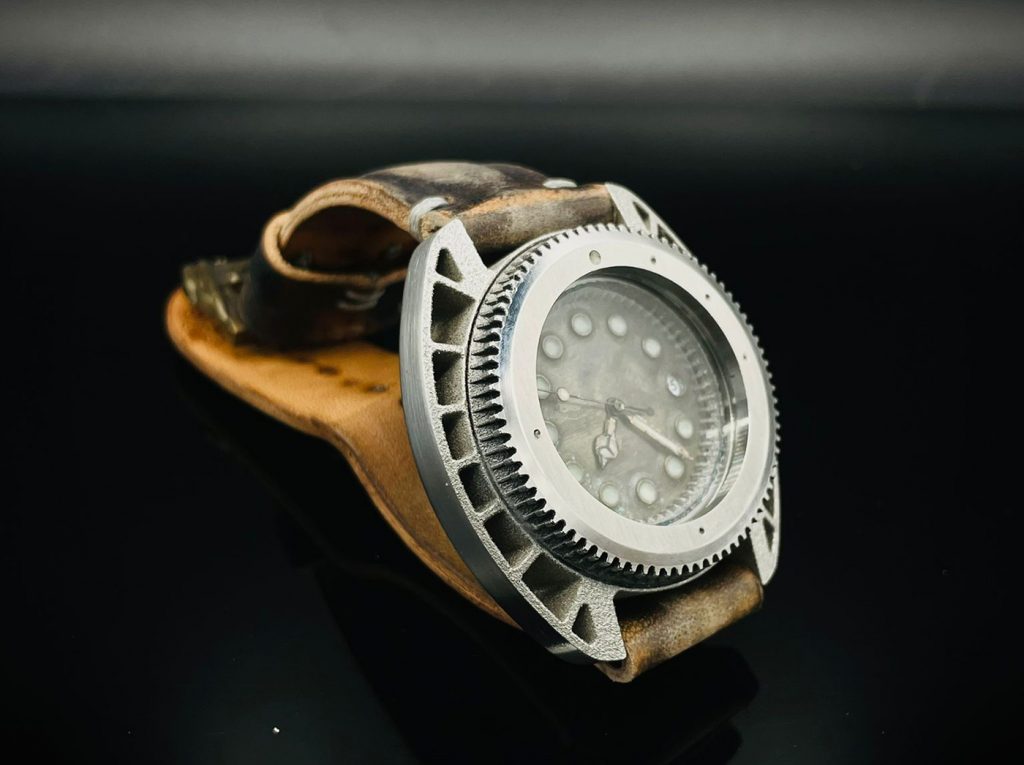
According to Tirelli, there are two major obstacles to the wider adoption of Additive Manufacturing in the hydraulics sector: productivity and mentality. As far as productivity goes, at the moment, there are only a few small AM components ready to enter serial production – one example being ‘cursors’: small valve parts that only reach up to 5 cm in length. In the case of bigger parts, the technology is not quite there yet. “Some technologies, such as Binder Jetting, show much promise for increasing productivity,” added Tirelli. “And, of course, machine manufacturers are constantly at work to produce increasingly bigger, more efficient machines.”
Mentality may be the hardest obstacle to overcome. Tirelli states that, in this case, to be able to validate the technology as an established manufacturing process, it is fundamental to communicate its potential both to the engineers and management of manufacturing companies. “In our experience, if there isn’t pressure from the top and from the bottom, at some point the process will come to a halt. There needs to be communication between the two levels, and open-mindedness at all levels. At that point, I believe, AM will succeed in becoming a technology acknowledged and widespread in every sector.”
“In this particular moment,” she continued, “every sector of mechanics is suffering from a lack of raw materials and components. Due to the pandemic, and the higher cost and limited availability of raw material, delivery times drag on for weeks – sometimes months. This is the perfect moment for Additive Manufacturing to flourish. The market needs quicker reaction times: this is the moment to make AM a fully integrated productive technology.”
For this reason, Aidro’s team plans to keep growing and promoting the technology as forcefully as they can. Tirelli concluded, “A few years ago, we were crazy enough to invest in the technology. Now that we have relationships with leading players in the industry, we are ready to take the next step and become one of the focal points of Additive Manufacturing in our sector.”
Contact
Valeria Tirelli
Co-CEO
Aidro srl
Via Prati Bassi 36
21020 Taino (VA)
Italy
Author
Luca van der Heide
Luca is a writer and English teacher, published both at an academic and personal level. He is the author of four novels, the last one published in June 2020.
Case Study: Validating and applying AM technology for agricultural machinery applications
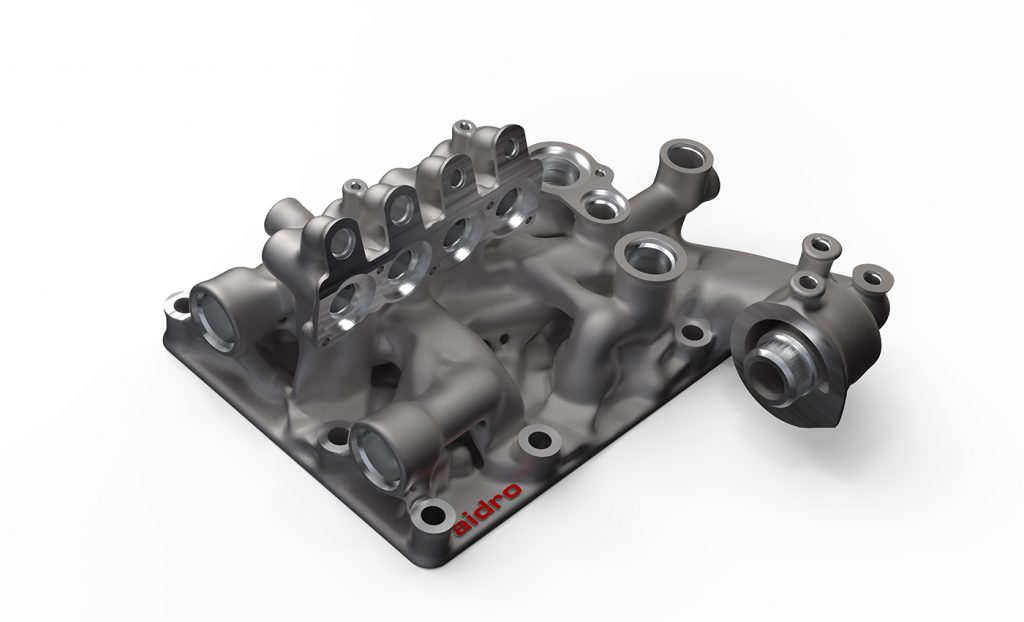
Three years ago, Aidro Hydraulics began collaborating with CNH Industrial, an Italian-American multinational corporation whose brands include New Holland Agriculture, Iveco and Steyr Tractor, to develop additively manufactured hydraulic manifolds for agricultural machinery. The idea was to validate the technology and take forward the benefits of design optimisation, weight reduction and a more sustainable environmental impact.
The project was showcased in July with a joint presentation by Valeria Tirelli and Nicholas Zanasi, CNH Industrial Lead Engineer, at Inn4Mech ‘Off-Highway Machine R-evolution’, a conference organised by Trentino Sviluppo S.P.A.
The first step was to validate the technology for agricultural machinery applications. Aidro additively manufactured the manifold in AlSi10Mg on an EOS M290, with the shape and geometries remaining the same as in the conventional part. Using AM for this design was very challenging, as the size of the manifold reached the edges of the EOS M290’s build area.
After support removal and CNC machining, the manifold was tested using endurance impulse pressure tests on CNH Industrial’s test bench. The positive results confirmed the validity and reliability of AM for agricultural machinery applications.
In a second step, Aidro redesigned the manifold using a DfAM approach, adding material only where it was needed. Thanks to the design optimisation achieved, the following advantages were observed:
- A weight reduction of 35% compared to the conventional manufactured manifold, a key issue for the electrification of mobile machinery
- The integration of two components into a single part, resulting in a reduction of time and costs for part assembly and a shorter supply chain
- Increased smoothness of the internal channels and reduction in pressure drops, meaning the agricultural machinery consumes less energy
- A more sustainable and environmentally friendly hydraulic solution
To validate the ‘sustainable impact’ of Additive Manufacturing, Aidro performed a Life Cycle Assessment (LCA), calculating a carbon footprint reduction of more than 60% for the the design-optimised AM hydraulic manifold, compared to the conventionally manufactured hydraulic manifold. This analysis was performed at cradle-to-gate level.







